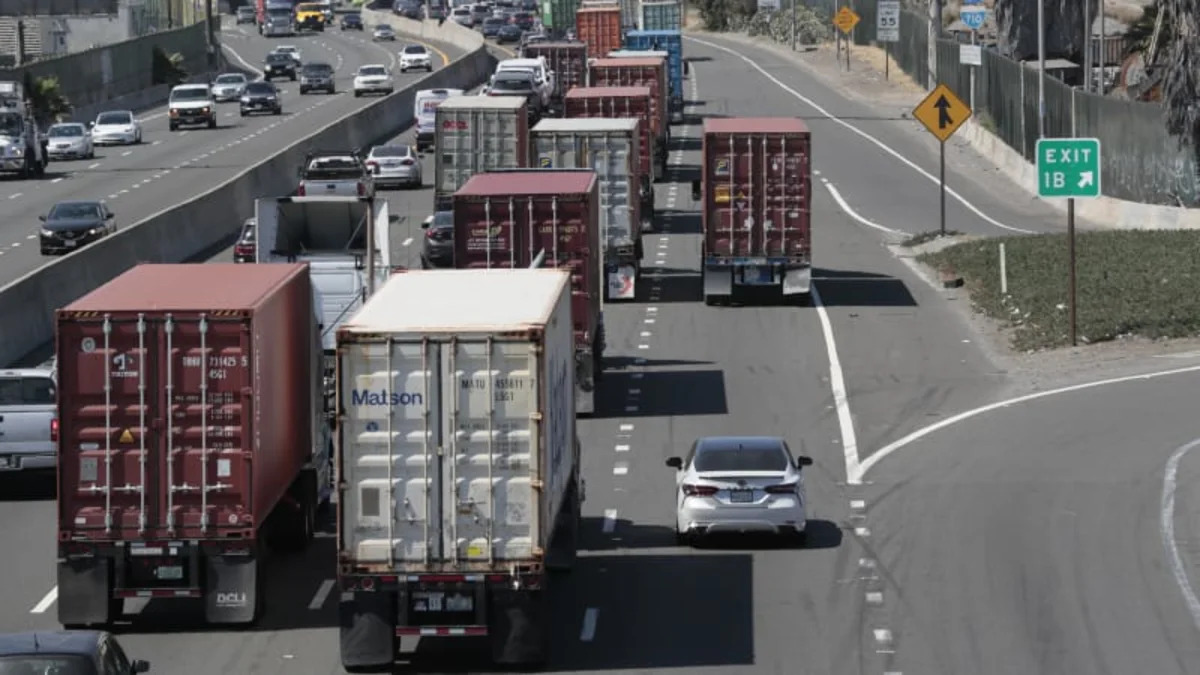Congress has made all the noises of a legislative body trying to move mountains large and small this year. One of the hillocks attacked last year by both houses, and then again in January this year by senators from Indiana and Montana, is the ongoing shortage of over-the-road (OTR) truck drivers — the ones who drive throughout the lower 48 states. Presently, states allow 18- or 19-year-olds to get their commercial driver's licenses (CDLs), but they aren't allowed to cross their state line until they turn 21. In February, Indiana Sen. Todd Young introduced the Developing Responsible Individuals for a Vibrant Economy Act, shortened to the DRIVE-Safe Act, which would lower the minimum age for interstate trucking to 18. Thanks to a healthy spate of opposition over questions of safety, the act has gone nowhere.
Now, the primary provisions of the DRIVE-Safe bill were included in the Infrastructure Investment and Jobs Act that the Senate has approved, with a few changes intended to assuage the critics.
The quick context is that the American Trucking Association says the industry was short nearly 70,000 drivers in 2019. The ATA and some distributors say getting younger drivers would help ease the shortage; an ATA economist told CNN this summer that kids who leave high school find work outside of driving, but "If we got to them earlier, we might be able to attract more drivers to the job." After all, the military already lets 18-year-old soldiers drive heavy trucks over the road. On the other side, highway safety organizations point to accident rates for commercial drivers under the age of 21, and the Owner-Operator Independent Drivers Association (OOIDA) says the real cause of the shortage is terrible pay and working conditions.
Having been an OTR driver myself for a short time, I say the 90% turnover rate for OTR drivers isn't about the age of the drivers; working 14 hours a day to make $84 before taxes on your best day — or being stuck in a warehouse parking lot in Pennsylvania and not working and making $0 — is no way to live no matter one's age.
The new measure would create a rolling roster of no more than 3,000 apprentices at any time, aged 18 to 20 years, overseen by the Federal Motor Carrier Safety Administration, which would study the program for three years. An 18-year-old who wanted to become an OTR driver would need to get his intrastate CDL, then complete two probationary periods of 400 hours, at least 240 of those hours behind the wheel. During the driving hours, a driver at least 26 years old with at least five years of OTR experience would need to be in the passenger's seat. In the previous bill, the chaperone only needed to be at least 21 and have two years of experience.
Another big change to the bill is that upon completion of the probationary period — as determined by the trucking company — the 18-year-old would have his application for a CDL submitted to the Department of Transportation, which would have final say based on the driver's safety record. A 19- or 20-year-old could follow this program, or submit their interstate application to the DOT after logging 25,000 miles of driving in their state. In this latest revision, the trucks in the program would need to be equipped with automated emergency braking, forward-facing dashcams, and a speed limiter set to 65 miles per hour or less.
At the end of three years, the DOT would assess the safety statistics of the drivers aged 18-20 who entered the program, and compare the findings to the safety stats for kids the same age who weren't truck drivers.
The 2,700-page infrastructure bill needs reconciliation and passage in the House of Representatives before it has a chance at President Biden's signature, and there are so many other contentious issues in the bill that it could be a fair way from passage. Oregon Rep. Peter DeFazio, chair of the House Transportation and Infrastructure Committee, called the Senate bill “crap,” and the OOIDA is still beating the drums because the Senate bill didn't include any money to expand and set aside trucker parking areas, an issue that's already terrible and would get worse if those 70,000 driver's seats ever get filled by 18-year-olds or anyone else.
Related video:


Sign in to post
Please sign in to leave a comment.
Continue